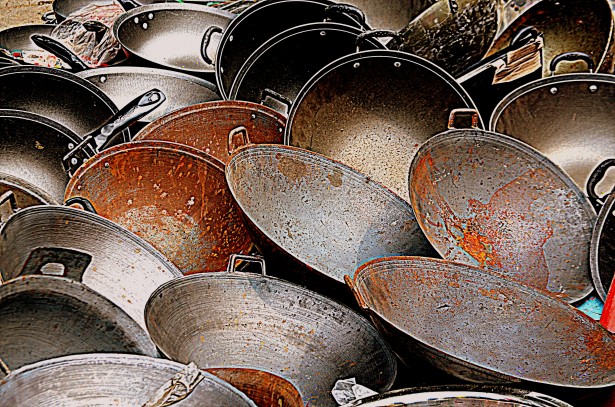

Dogs
What is dog hoarding? It often goes something like this....
There is a house down the road that is filled with sadness and neglect. If you get close enough to this house, you can smell the stench of urine and feces and you can hear the sounds of canine cries for help. Peeking out the window are the pleading eyes of an emaciated dog, hungry for food and love. This is the home of a dog hoarder. With the help of a Good Samaritan, it will be one of 2,000 animal hoarders reported this year in the United States.
Dog hoarding (also called collecting) is the collection and mistreatment of large numbers of dogs. A family with more canine friends than the average home is not necessarily guilty of hoarding. Hoarding happens when there are so many dogs, adequate care cannot be given. The out-of-control population leads to suffering of the animals and even the humans living with them.
The home of hoarded dogs has disgusting, unsafe living conditions. In many circumstances, much of the home is covered in waste and even decaying, canine corpses. It is not uncommon to find piles of feces several inches thick in some places of the home. The urine-soaked floorboards may even be rotting through. The ammonia levels in a hoarder's house are so high, the air is unfit to breathe. Protective masks and suits are often worn when evacuating the pets from these houses.
Because the large population cannot be afforded and maintained, proper nutrition, cleanliness, and veterinary care are sacrificed. As a result, the dogs are ill and starved. Lack of vaccinations and parasite protection allow disease, fleas, heartworms, etc. to run rampant through the population. These dogs are usually only fed a sparse diet of a cheap dog food or some scraps of human food here and there. Death is quite common in the hoarded canine community, and the surviving dogs are left to live amongst the decaying remains of the victims.
Hoarders are most commonly single women who are middle-aged to elderly. However, anyone of any sex, age, or class can be a hoarder. Often it is a person who seems healthy and "normal" outside of their home. Hoarders work hard to keep their large number of pets a secret, for they fear having their pets confiscated if anyone knows the truth. Mental illness, especially obsessive-compulsive disorder, is a common affliction of animal collectors.
Because of mental illness, hoarders are blind to the suffering they are inflicting on their dogs. They seem to truly believe they are helping the animals; some even refer to themselves as rescuers.
A dog collection may begin with the adoption of a couple dogs who are never spayed and neutered. These dogs begin breeding, and their offspring do the same. Soon the population spirals out of control. A collection may also be fed by an owner who chooses to take in every stray found, and he or she is unable to pass up a dog who is free to a good home. Hoarders may even claim they are simply going to take the dog in until they can find a new adopter, but that new home is never sought out.
It is extremely rare for hoarders to admit they have a problem and seek help. Most of the time, dogs in this situation are rescued when a Good Samaritan reports his or her suspicion of the hoarding. Reporting a hoarder will lead to the rescue of the suffering animals, help for the hoarder's mental illness, and, if convicted, punishment for the abuse of the pets.
If you are suspicious of a dog hoarder, DO NOT be afraid to do something. The suffering dogs need and very much long for your help. Call your local police department, animal control officer, or humane society. You can do it anonymously if you prefer. That one phone call will be the first step in ending the suffering of many dogs, preventing suffering of future canine victims, and making a huge difference in the animal world.
 10 Best Dog Breeds for Millennials
10 Best Dog Breeds for Millennials
10 Best Dog Breeds for Millennials
10 Best Dog Breeds for Millennials
 Top Watch Dogs – Breeds That Protect the Family
Top Watch Dogs – Breeds That Protect the Fami
Top Watch Dogs – Breeds That Protect the Family
Top Watch Dogs – Breeds That Protect the Fami
 Great Tips For Obtaining The Best From Your Home Transaction
In case you are offering of getting a for any reason, you w
Great Tips For Obtaining The Best From Your Home Transaction
In case you are offering of getting a for any reason, you w
 Top Pets to Fit Your Lifestyle
Top Pets to Fit Your Lifestyle
Top Pets to Fit Your Lifestyle
Top Pets to Fit Your Lifestyle
 Big Pooch on Campus: Can You Have a Dog While in College?
Big Pooch on Campus: Can You Have a Dog While
Big Pooch on Campus: Can You Have a Dog While in College?
Big Pooch on Campus: Can You Have a Dog While
Copyright © 2005-2016 Pet Information All Rights Reserved
Contact us: www162date@outlook.com